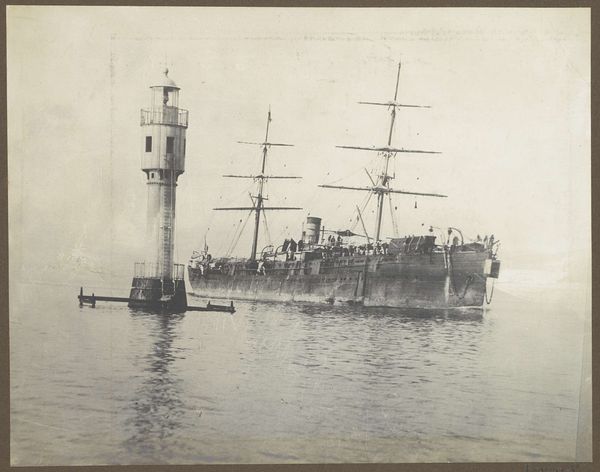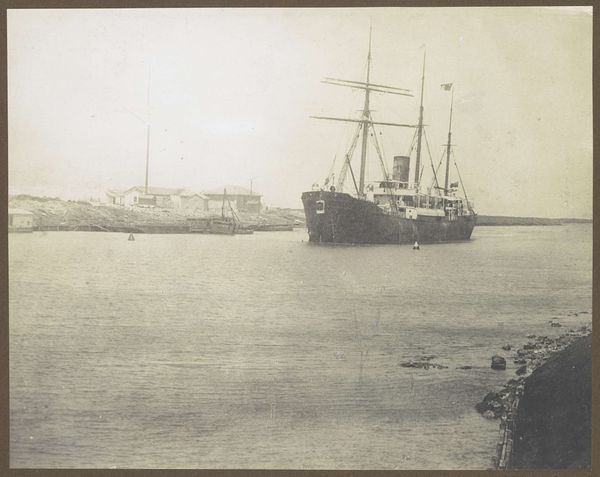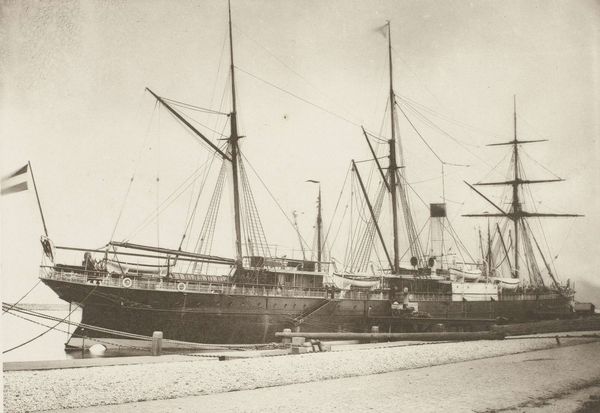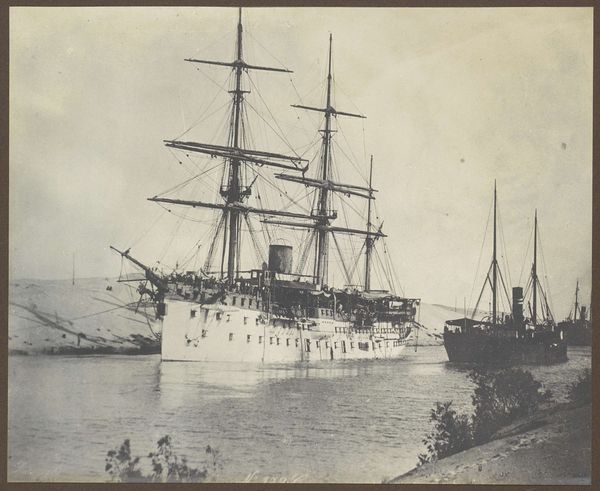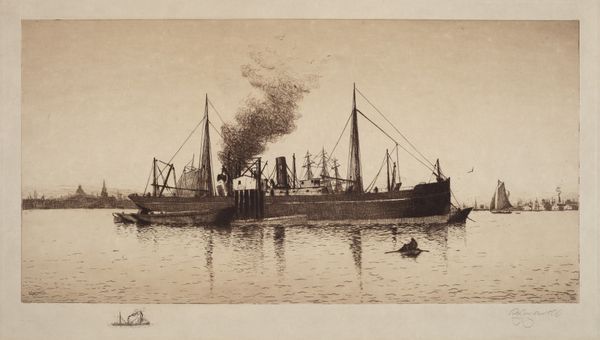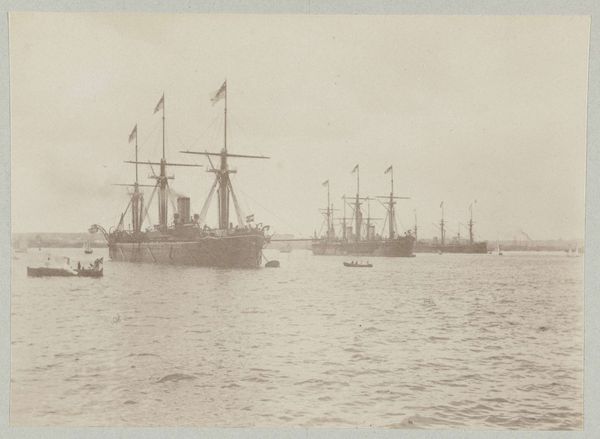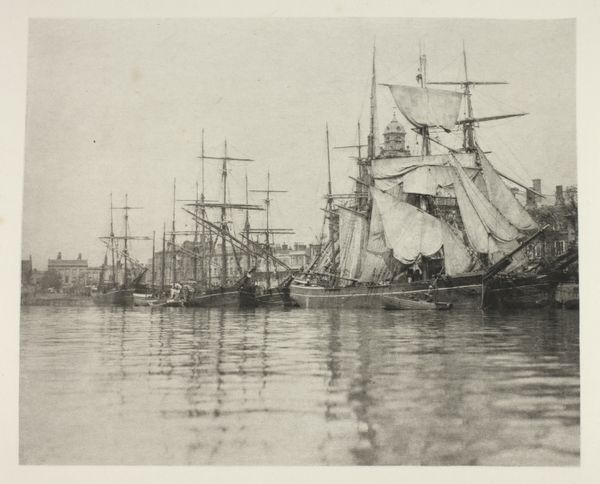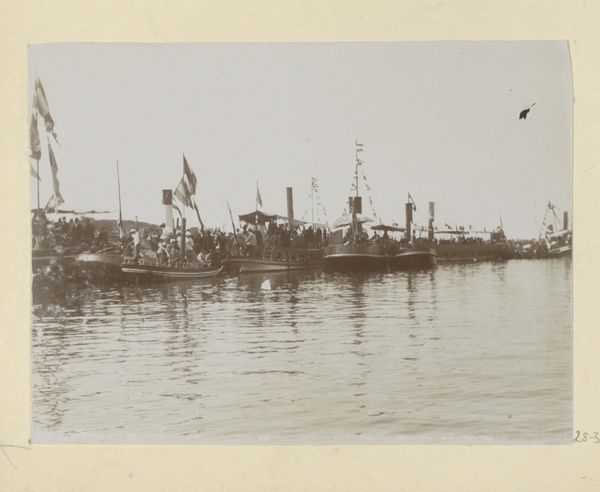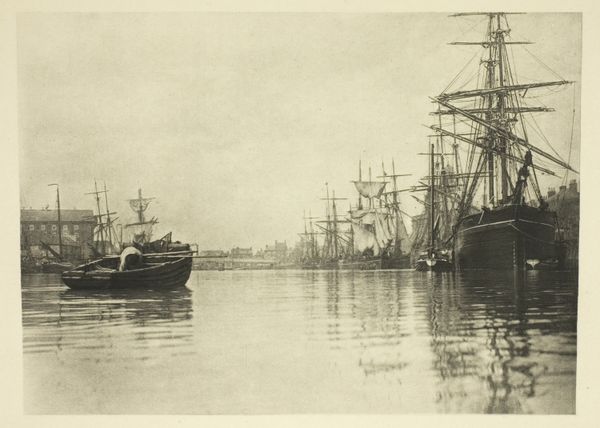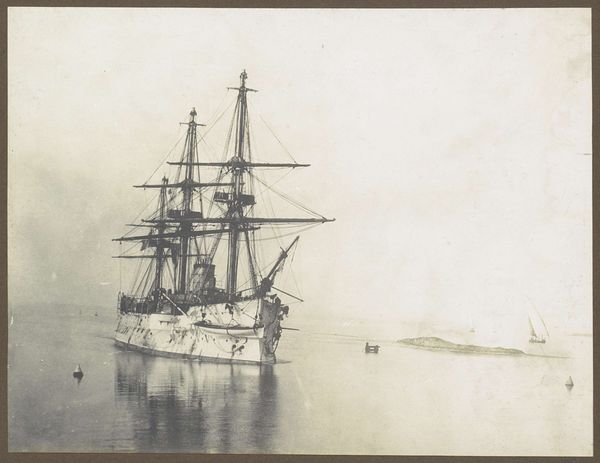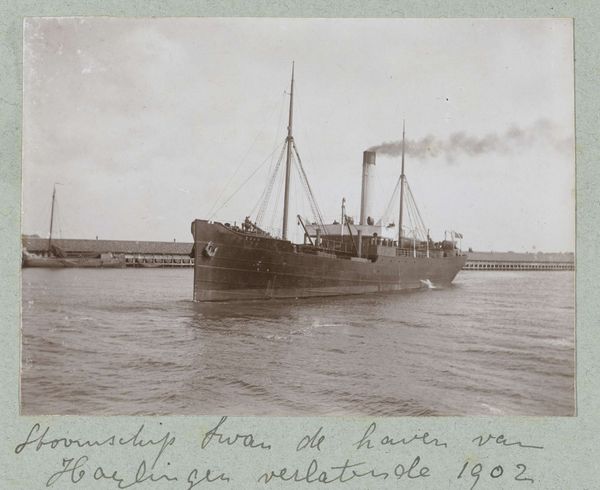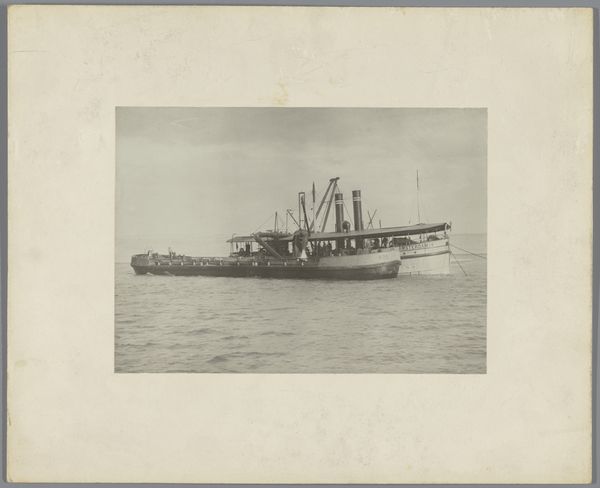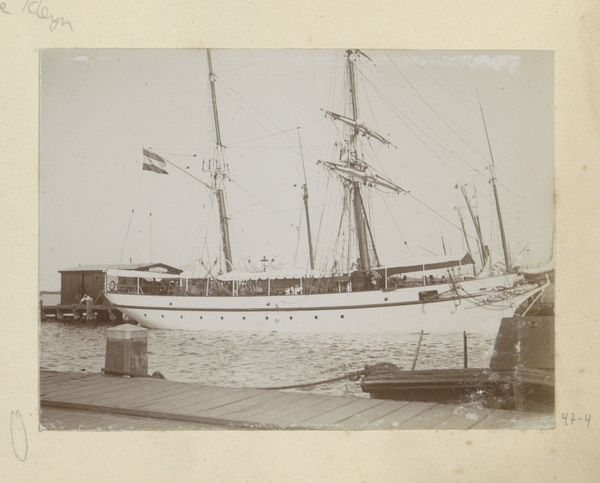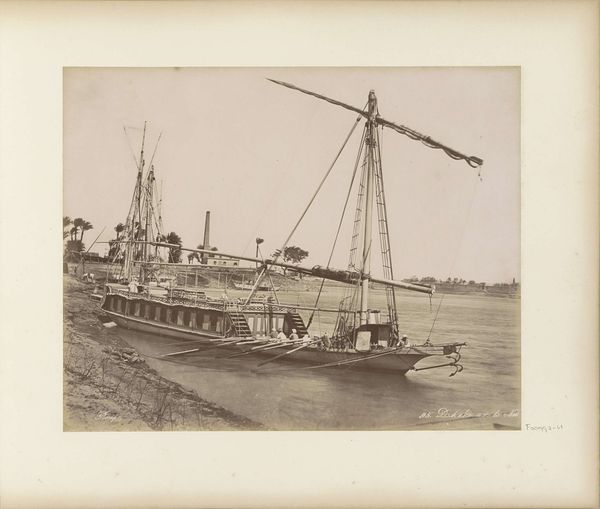
photography, albumen-print
#
landscape
#
photography
#
orientalism
#
history-painting
#
watercolor
#
albumen-print
Dimensions: height 217 mm, width 277 mm
Copyright: Rijks Museum: Open Domain
Editor: This is a photograph, an albumen print, taken by C. & G. Zangaki around 1880 to 1900. It's called "Ship sailing through the Suez Canal near a dredging ship." The scene feels very industrial and yet there is also a grandeur about it. How do you interpret this work, particularly considering its historical context? Curator: This image presents a fascinating glimpse into a period of immense geopolitical significance. The Suez Canal itself represents a pivotal moment in global trade and colonial ambition. The presence of both the ship, a symbol of international commerce, and the dredging ship, emphasizing the ongoing project of controlling nature, speaks volumes. Editor: Control seems key, doesn't it? Curator: Precisely. The image is not just a neutral recording, but a powerful statement about European influence in Egypt. Think about how this image might have been circulated: Who was meant to see it and what message was it intended to convey? Editor: Perhaps a celebration of progress and engineering prowess aimed at a European audience? Curator: Exactly. It's crucial to remember the politics of imagery here. Whose story is being told, and whose is being omitted? The local Egyptian perspective is conspicuously absent, reduced to the landscape being altered. Editor: So, beyond the aesthetic qualities, the photograph operates as a tool for shaping public perception and legitimizing colonial projects? Curator: Absolutely. Examining art like this, through its socio-political context, reveals its power to influence historical narratives. Editor: I never considered how a landscape photograph could be so loaded. Thanks, that gives me a lot to consider. Curator: It highlights how deeply embedded art is within history, shaping not just our vision, but also our understanding of power.
Comments
No comments
Be the first to comment and join the conversation on the ultimate creative platform.
